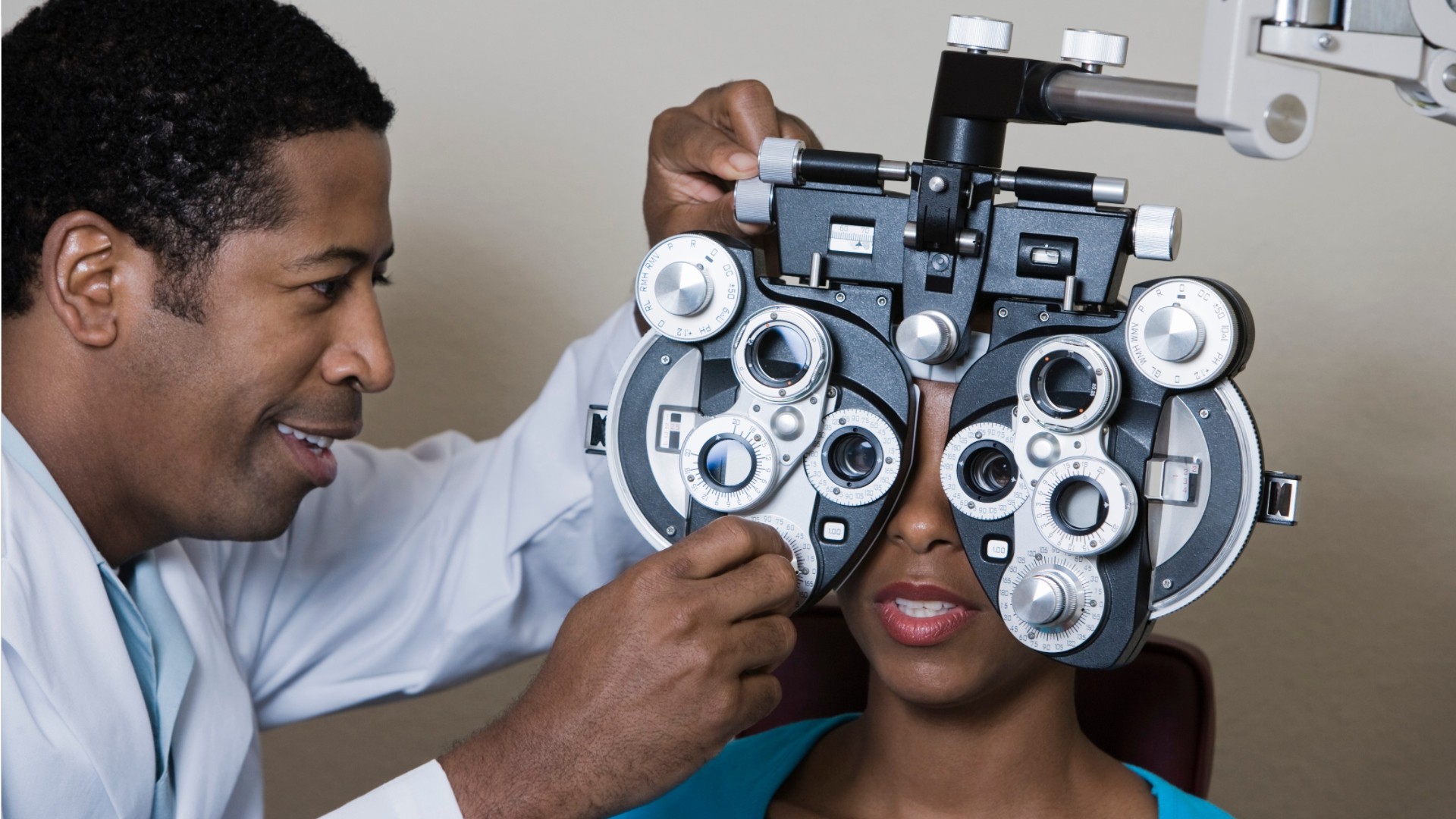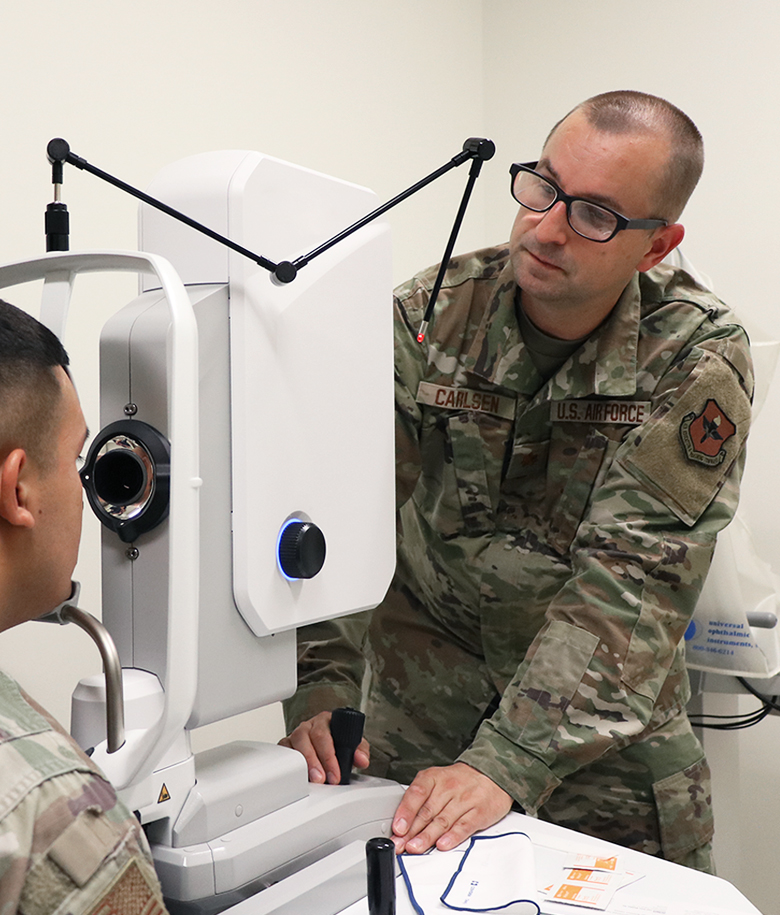Just How an Eye Doctor Can Help Avoid Vision Problems in Chino
Checking Out the most up to date Technological Improvements in Optometry and What They Mean for Eye Doctors
From the accuracy of Optical Comprehensibility Tomography to the nuanced insights used by AI-driven analysis devices, these technologies are setting new criteria in client analysis and treatment. As these developments permeate the method, eye doctors are encountered with the challenge of embracing these devices to enhance client results.
Technologies in Diagnostic Equipment
Progressing the area of optometry, technologies in analysis devices have actually reinvented the method eye treatment specialists analyze and detect ocular conditions and aesthetic disabilities. The previous decade has actually witnessed significant technological developments, enabling more exact and thorough evaluations. Optical Comprehensibility Tomography (OCT), for instance, offers high-resolution cross-sectional pictures of the retina, permitting the very early detection of diseases such as glaucoma and age-related macular degeneration. This non-invasive imaging strategy has actually come to be essential in contemporary optometric technique.
An additional key advancement is the introduction of innovative corneal topography systems, which map the surface curvature of the cornea with accuracy. These tools are particularly helpful for fitting contact lenses and identifying corneal problems. Additionally, digital retinal imaging has actually transformed standard ophthalmoscopy, offering thorough, scenic sights of the retina that facilitate extensive visual evaluations.
The development of wavefront aberrometry has additionally been crucial, allowing the evaluation of refractive errors with unequaled precision (Opticore Optometry). This innovation aids in tailoring corrective lenses and improving medical results for refractive surgeries. Jointly, these analysis innovations equip eye doctors to deliver superior patient care, guaranteeing early intervention and tailored therapy approaches, ultimately boosting aesthetic health and wellness outcomes
AI in Patient Monitoring
Building on the structure of innovative diagnostic devices, the consolidation of artificial knowledge (AI) in client management represents a transformative leap for optometry. AI systems are increasingly employed to improve performance, accuracy, and personalization in person care.
In addition, AI-driven platforms help with streamlined individual interactions and management procedures. Automated organizing, virtual examinations, and customized follow-up strategies not just improve individual fulfillment but likewise maximize time administration for professionals. These systems can triage patients based on the seriousness of their conditions, making sure that those in crucial demand obtain punctual focus.
Furthermore, AI improves decision-making by giving optometrists with evidence-based referrals and therapy paths. By incorporating information from electronic health and wellness documents, AI devices provide understandings that educate clinical decisions, lowering the risk of errors and improving individual end results. As AI continues to evolve, its role in patient administration will likely broaden, improving the landscape of optometric treatment.
Advancements in Retinal Imaging
In the realm of optometry, retinal imaging has seen exceptional technological innovations that are enhancing diagnostic capabilities and client care. Developments such as Optical Coherence Tomography (OCT) and fundus photography have revolutionized how eye doctors assess the retina and envision. OCT, particularly, offers high-resolution, cross-sectional photos of the retina, permitting the detailed assessment of its layers. This capacity is important for early discovery and administration of problems like glaucoma, diabetic retinopathy, and age-related macular deterioration.
Boosted imaging techniques like OCT angiography are further refining analysis precision. This non-invasive technique maps blood circulation in the retina, providing critical insights into vascular health and wellness without the need for dye shots. Additionally, flexible optics technology is being integrated into retinal imaging systems to remedy ocular aberrations, supplying extraordinary image quality. Such developments facilitate the recognition of minute retinal look at here adjustments that could represent condition progression.
Additionally, improvements in man-made knowledge are augmenting retinal imaging by enabling computerized analysis of large datasets. These systems help eye doctors in determining patterns a measure of pathology, therefore enhancing analysis precision and performance. Jointly, these innovations are transforming retinal imaging into a cornerstone of contemporary eye care, enhancing end results and increasing therapeutic possibilities.
Teleoptometry's Growing Duty
Teleoptometry is increasingly becoming an important component of eye care, driven by innovations in electronic interaction and analysis tools. As optometry welcomes electronic change, teleoptometry facilitates remote consultations, allowing optometrists to prolong their solutions beyond standard limits. This is specifically useful in rural and underserved areas where access to specialized eye care is often limited. By leveraging high-resolution video clip conferencing and progressed retinal imaging, eye doctors can perform detailed eye exams from afar, guaranteeing timely diagnosis and therapy.
The integration of artificial knowledge (AI) additional enhances teleoptometry, allowing the analysis of visual data and helping in the detection of eye problems such as glaucoma and diabetic retinopathy. AI-powered algorithms can rapidly analyze intricate imaging data, giving optometrists with valuable understandings that boost clinical decision-making.
Additionally, teleoptometry sustains continuity of treatment through seamless integration with digital health and wellness documents (EHRs), allowing eye doctors to preserve thorough individual backgrounds. When consulting with various professionals., this guarantees that people receive constant and individualized treatment also.
In spite of these benefits, challenges remain, including guaranteeing information safety and security and handling individual expectations. However, teleoptometry represents a significant stride towards even more available, effective, and patient-centered eye treatment. As modern technology develops, its role is poised to broaden additionally.

Future Trends in Eye Care
A myriad of innovative trends is readied to improve the future of eye care, driven by technological innovations and the evolving needs of clients. One considerable trend site web is the assimilation of synthetic intelligence (AI) in diagnostics, which promises to enhance the precision and performance of eye assessments. AI algorithms can evaluate huge quantities of data from retinal images, potentially discovering problems like diabetic person retinopathy and glaucoma earlier than traditional approaches.
Furthermore, individualized medicine is obtaining grip in optometry, with genetic screening educating customized treatment plans. This approach aims to enhance individual outcomes by customizing treatments to individual hereditary profiles. Wearable modern technology, such as smart contact lenses, is additionally coming up, using real-time surveillance of intraocular pressure or sugar levels, therefore giving continuous understandings right into systemic and ocular wellness.
The fostering of increased reality (AR) and virtual reality (VR) in training and client education is an additional arising fad. These modern technologies use immersive experiences that can improve understanding and abilities both for people and eye doctors. As these patterns advance, eye doctors need to remain abreast of technological advancements to supply advanced treatment, guaranteeing better individual outcomes and complete satisfaction in the vibrant landscape of eye care.
Final Thought

Jointly, these analysis developments empower optometrists to provide remarkable patient treatment, making certain early intervention and tailored treatment methods, inevitably enhancing visual health outcomes.

As these innovations proceed to advance, eye doctors must adjust and include them into method, eventually optimizing process effectiveness and elevating the criterion of eye care supplied to people.